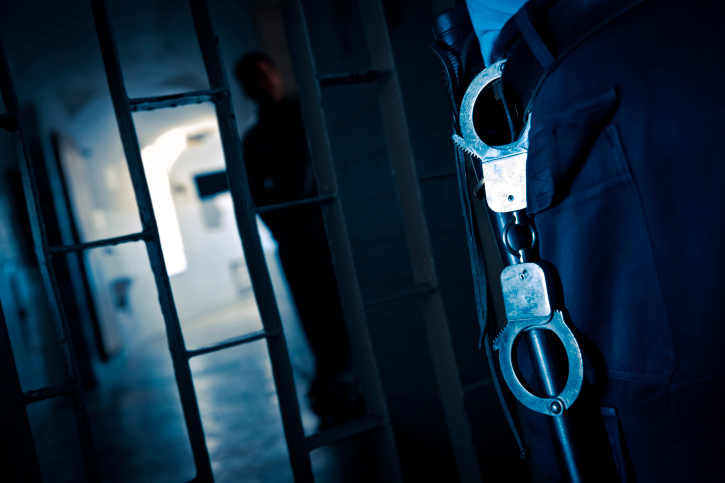By Leischen Stelter, editor of In Public Safety
The suicide rate among correctional officers is significantly higher than other occupations and twice as high as police officers. Yet, the topic of suicide and the stressors contributing to suicide are rarely discussed by corrections administrators.
In fact, very few correctional facilities have properly trained counselors or established mental wellness programs to help correctional officers cope with the unique stressors that result from working with criminal offenders.

So why are correctional agencies, which have considerably higher numbers of officers killing themselves, not doing more to address the issue of mental health and suicide?
The main reason is that few correctional leaders and administrators are willing to openly address suicide. American Military University (AMU) professor Dr. Michael Pittaro, who spent 20 years working in corrections, aims to start this conversation and build awareness among officers and administrators about the need to improve mental health.
On July 28, Pittaro presented at the Southern States Correctional Association Conference in Little Rock, Arkansas, to correctional representatives from 14 southern states. His presentation, Stress, Burnout, and Suicide Among Correctional Workers: The Silent Killers, did not hold back in calling out correctional administrators for their lack of leadership when it comes to addressing stress and suicide.
Administrators aren’t the only ones at fault. During his presentation, Pittaro called on academics to conduct more research on the issue of suicide in corrections. “The topic of police officer suicide has been extensively studied and programs subsequently developed to minimize the number of suicides among police officers, but there’s a paucity of research that focuses on suicide among correctional officers,” he said. Without the research and a comprehensive understanding of the issue, administrators can continue to dismiss the skyrocketing suicide rates in corrections.
Unique Stressors
One of the primary differences between stressors in law enforcement and corrections is that correctional officers are surrounded by criminal offenders every day. These offenders suffer from mental illness, physical health problems, sexual deviancy, and many other psychological issues, thus, the chances for potential altercations with correctional officers is very high, said Pittaro. Being exposed to such potential physical danger on a daily basis can be a major source of stress and can take a toll on an officer’s psychological, emotional, and physical well-being.
[Related Article: Stress Management Strategies for Correctional Officers]
But, surprisingly, the lack of physical safety is not the leading cause of stress among correctional officers. Pittaro discussed other sources of stress including inadequate and weak leadership from administrators, which was a primary cause of stress for him during his corrections career. He found that administrators were close-minded, made decisions without input from staff members, and were poor communicators.
“Communication must flow downward and upward. Administrators should be available, accessible and visible to employees. This was not the case where I worked,” he said. “Every idea I had was dismissed before I could fully explain my reasoning.”
In addition, his administrators dismissed and discouraged discussion of emotions. “The perception was that exhibiting emotions was a sign of weakness and an officer was considered vulnerable and possibly unsuited for the position if he or she let on that they were having issues,” he said. “Therefore officers and staff would essentially keep their emotions bottled up, which is incredibly unhealthy. If someone was brave enough to go to the administration, chances are they would be reassigned to another position or overlooked for a promotion, or in some way, that conversation would be held against them.”
How Administrators Can Help Officers
The first step to helping officers is by changing the leadership style. “Correctional administrators need to adopt a transformational leadership approach which has proven successful in reducing officer turnover, improving morale, and job satisfaction,” said Pittaro. “This approach is opposite that of the punitive and authoritative style commonly seen in corrections. Transformational leadership focuses on empowering, coaching, and mentoring employees.”
[Related Article: Transformational Leadership and the Impact on Morale, Satisfaction in Corrections]
Pittaro suggested that administrators should develop employee assistance programs (EAPs), wellness programs, and peer-support programs to assist correctional officers who are experiencing stress. Such programs can help individual officers and improve their performance, which benefits the entire facility.
[Related Article: Improve Your Facility by Changing Your Leadership Style]
However, Pittaro cautioned that leaders need to ensure they hire the right people to help officers. If an agency pursues hiring counselors and psychologists, they need to make sure those professionals have a background in corrections because the issues faced by officers are not the same as in other fields.
Supervisors and leaders also need to undergo training to identify signs of stress, burnout, and suicide among officers. They need to be empowered to take a proactive stance in getting officers help and not be encouraged to use disciplinary measures when issues are identified.
Ultimately, leaders need to start talking about mental health and wellness. Supervisors need to encourage officers to talk about stress and seek help when they need it so that no more officers feel so alone, overwhelmed, and powerless that they resort to ending their own lives.
About the Author: Leischen Stelter is the editor of American Military University’s premier blog, In Public Safety. She writes about issues and trends relevant to professionals in law enforcement, corrections, fire services, emergency management, and national security. You can follow AMU on Twitter @AMUPoliceEd or Facebook.

Comments are closed.